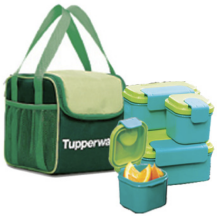Stage 5: Build and Test Prototype

Tupperware Children’s Healthy Eating System example
Background — Prior Stages
From our dealings with aging consumers, we found there was growing dissatisfaction and frustration when it came to food storage containers. As people were aging and acquiring functional limitations, they were having more and more difficulty with opening and closing plastic food storage containers.
In 2007 we partnered with Tupperware to design the next generation Ideal Food Storage Container. It was to be Transgenerationally designed (a design would span the ages from children to the elderly). We initially ran three alpha (concept generation) consumer focus groups in May 2007 on the topic. Focus group participants confirmed our initial findings of dissatisfaction with existing containers, and shared that they were not pleased with having to employ novel methods to open them. Many of the group participants stated that not only were the methods they employed not always reliable, but they also provided safety concerns, including possible spillage, damage to the container, and injury to the consumer. Participants in those focus groups went on to identify 24 key functions and features for the new product.
Step 5.1
Build Alpha Prototype Models: Tupperware was to produce molds for the prototype and then produce sample prototypes based on our primary market research findings.
Step 5.2
Monitor Development Process: We were in periodic contact with the Tupperware designers, but did not see any preliminary drawings. The designers were aware of the consumer driven design criteria that needed to be incorporated into the prototype.
Step 5.3
Test Alpha Prototype Models: Upon completion of the prototype, Tupperware sent in the prototype to our fabrication facility for bench testing. The prototype failed our tests, as it did not address key design element criteria. We presented our findings to the Tupperware product designers who redesigned the alpha prototype based on our feedback. Key features that needed to be included were: a latch mechanism for opening and closing the container that would not require the need for finger strength (arthritis sufferers); and the lid needed to possess a locking mechanism that would be activated by the push of a button or bar. In addition, the seal (lid) for closing the container needed to remain attached to the container via a hinge, and the mating of the seal (lid) and container needed to be accomplished by pressing a button or bar on the container.
Step 5.4
Refine Models: Based on our feedback, Tupperware redesigned the container and incorporated a large bar on the seal (lid) for easy opening and closing of the container. The large bar design could be opened and closed easily by using one’s fingers, the palm, or the side of one’s hand (for arthritis sufferers). The lid was also hinged to the container, yet removable for easy cleaning.
Results
Tupperware test marketed the design by introducing a variety of food storage containers in Australia and New Zealand targeted for children. The product is called Tupperware’s Children’s Healthy Eating System (CHES). Tupperware anticipates product introduction shortly in the United States and in addition also anticipates re-coloring the range and positioning it for the mature consumer in the near future.
